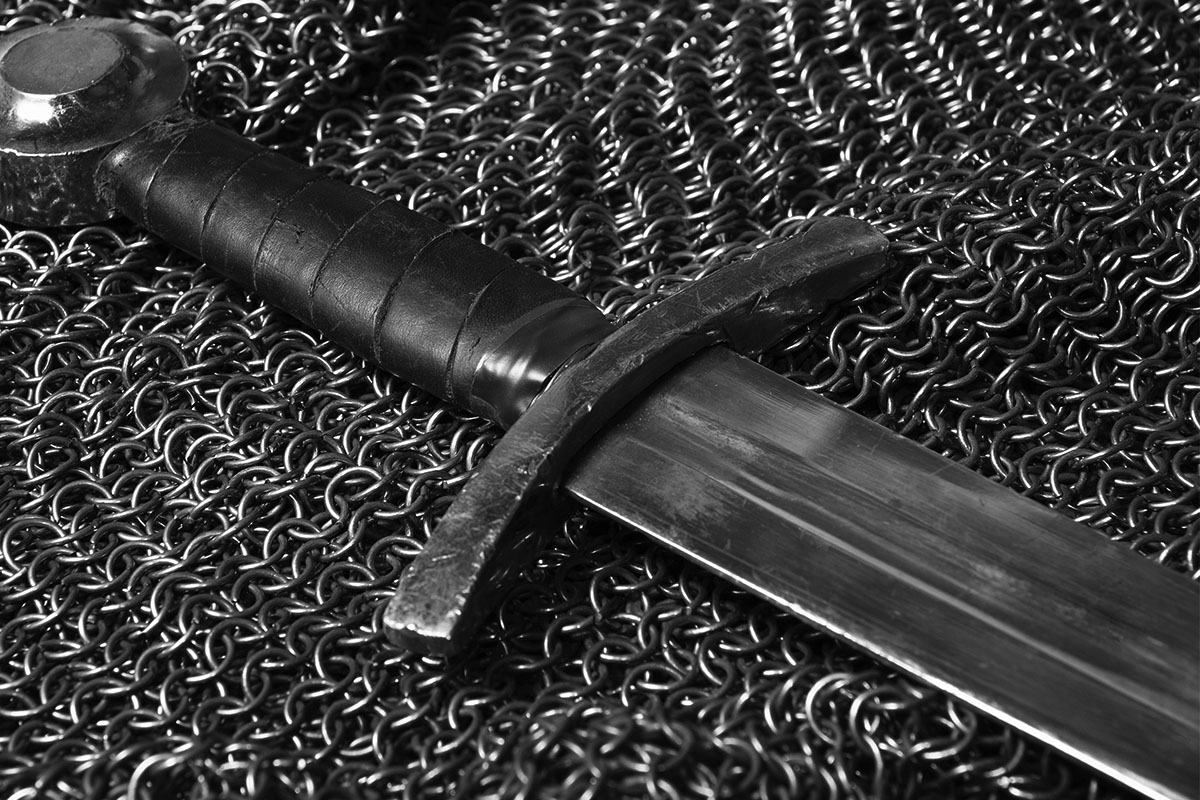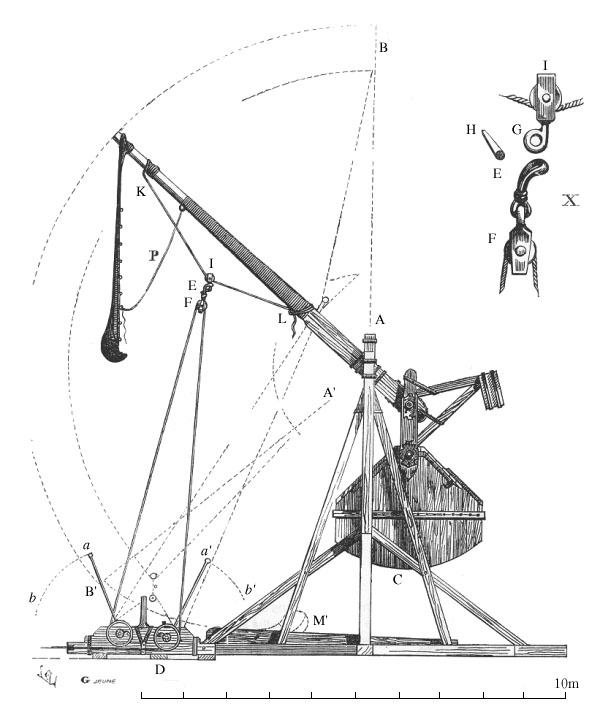 The United Religious, Military and Masonic Orders of the Temple and of St John of Jerusalem, Palestine, Rhodes and Malta in England and Wales and Provinces Overseas
The United Religious, Military and Masonic Orders of the Temple and of St John of Jerusalem, Palestine, Rhodes and Malta in England and Wales and Provinces OverseasProvince of Kent
 Weapons and PPE for a Knights Templar
Weapons and PPE for a Knights Templar Knight Templar: Swords
Knight Templar: Swords
My own Templar sword, the inscription reads: - "Nothing for us Lord, Nothing for us but the Glory of thine Name".
- Overall length: 101.6cm
- Blade length: 82.5cm
- Weight: 1.65kg
Knight Templar: Bow and Arrow
Knight Templar: The Mace
Preferred by some Knightly Clerics who had sworn not to carry an edged weapon.
Knight Templar: The Lance
The Lance, only used by Knights when mounted, was a made of sturdy yet flexible ash wood, with a length of between nine and fourteen feet. Very successful in the initial charge, but became unwieldly in close combat. Usually tipped with an iron point it could penetrate most forms of armour when properly used.
Knight Templar: Battle Axe
It was the Vikings who first converted the humble felling axe from a forester’s tool into the most devastating limb severing weapon.
Knight Templar: Knives and Axes
Knight Templar: The Spear
Spears were used not only against infantry but also against cavalry charges to great effect. The main use of the spear is to pierce armour and shatter bone, killing in one hit.
Crusader Helmets: Men at Arms
Crusader Helmets: Knights
It became very hot inside very quickly, providing very little ventilation. It was therefore often discarded after the initial clashes in the melee of combat.
Crusader Helmets: The Great Helm
It was the primary head protection particularly during the earlier Crusades. Usually worn with a mail coif, some versions added nose guards and other face protection.
It developed into the pointed Bascinet and The Great Helm.
Crusader Gambeson
In the heat of the Holy Land these were replaced by cotton shirts, if authorized by the Master.
Crusader Chain Mail
Knight Templar: The Trebuchet
The trebuchet and similar 'artillery' were developed by the Romans. It was first used during the crusades by the Muslims firing stones of flammable projectiles against and over city walls to bring them down. In some instances, they were used to fire dead plague victims or the body parts of murdered prisoners over city walls.
 Side view of counterweight trebuchet, with a detail of the counterweight release mechanism
Side view of counterweight trebuchet, with a detail of the counterweight release mechanism< back